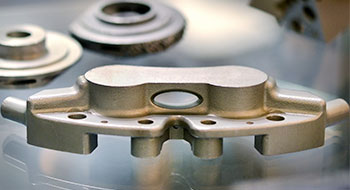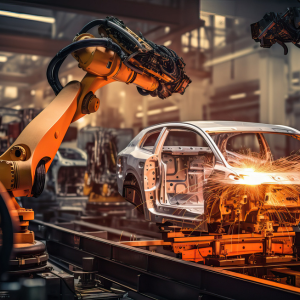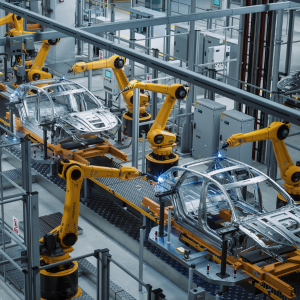2020 Manufacturing Trends
Post By: Ryan King On: 17-10-2019 - Automation & Control - Industry 4.0 - Industry Trends - Manufacturing
The Fourth Industrial Revolution is upon us, and every month brings us closer to the advanced state of integrated automation that is Industry 4.0. What exactly does this mean? In real terms, manufacturers will see a considerable reduction in their operating costs, enabling them to get the job done far more quickly and efficiently than ever before. They’ll be able to streamline their production processes with advanced planning techniques. At the same time, they’ll be able to provide much better support to their customers.
In accord with these goals, the top 2020 manufacturing trends likely to influence the manufacturing industry are:
- Closer alliances between humans and machinery
- Continuous, real-time analytics
- Usable big data resources
- Greater reliance on predictive maintenance
- Live resource planning support
- 3D industrial printing
- Better supply chain management
1. Closer Alliances Between Humans and Machinery
Human beings are beginning to rely more closely on assistive technologies in their working environment. Last year, Rowse was already predicting the importance of collaborative technologies such as HMI, robots and PLCs. In 2020, we’re focussing on the importance of virtual and augmented reality applications to create a more powerful working alliance. There are great benefits to be found in the manufacturing landscape with the use of such applications, especially for VR. In many environments, manufacturers are now able to visualise their product at the planning stage. Some vehicle plants, for example, enable design engineers to walk around inside their schematics, to get a better perspective of all the individual processes. Modifications can be made to the design, and problems ironed out before the production stage, thus saving on costly design faults. Spotting an error before it becomes an integral part of the manufactured product also helps to reduce inspection times later on.
2. Continuous, Real-Time Analytics
The IoT is already up and running in many environments, meaning that anything from your car to your smart home can be connected to the internet. The manufacturing environment is no exception, and many industrial processes are now being designed with cloud-connected sensors. The data from these sensors can allow machines to fine tune processes, even while they're active. Big data is also collected and uploaded to the cloud, where it can later be assessed.
3. Usable Big Data Resources
This mass of sensory data generally needs to be analysed to make it usable, but analytics apps and big data processing mean that this is now a reality. Real-time analysis gives manufacturers considerable insight into the performance of all production elements, enabling them to fine tune the whole system. Production can be better optimised, potential problems detected even before they arise, and the overall manufacturing process improved by a substantial margin.

4. Greater Reliance on Predictive Maintenance
Computing the financial cost of time lost in repairing machine failure is a daunting task, when every hour lost has knock-on effects on overall production. Based on information collected in 2018 by OneServe, a software service management company, most manufacturers will lose from £60,000-£500,000 a year through unplanned machine downtime. This staggering figure is predicated on an average failure occurrence every two and a half months, something which we can now reduce drastically. Predictive maintenance technology is one of the greatest achievements of Industry 4.0, allowing accurate condition monitoring of every machine. This means that potential problems are foreseen and maintenance can be planned in advance, reducing unplanned downtime by an estimated 50%.
5. Live Resource Planning Support
Resource planning software also provides manufacturers with real-time information, so business operations can be tweaked as and when required. By enabling a faster operational decision-making process, the likelihood of unexpected downtime can be even further reduced.
6. 3D Industrial Printing
Certain machinery and components can now be printed in 3D, making them much easier to attain, and more cost-effective to produce. Furthermore, manufacturers can now produce items on demand, eliminating the whole process of stockpiling and storage. Gone are the days when constructing heavy equipment took months. With 3D printing capabilities, the same process can now be completed within days, and at a much lower cost.

7. Better Supply Chain Management
Success in business is all about competition, and new supply chain technology offers a considerable competitive advantage. Manufacturers will have more visibility throughout the supply chain and better control of the inventory, thereby improving overall customer satisfaction.
These 2020 manufacturing trends represent only the tip of the Industry 4.0 iceberg, as every month brings new technological improvements, which offer manufacturers previously unimagined production and management advantages.
Get More From Rowse Straight To Your Inbox




